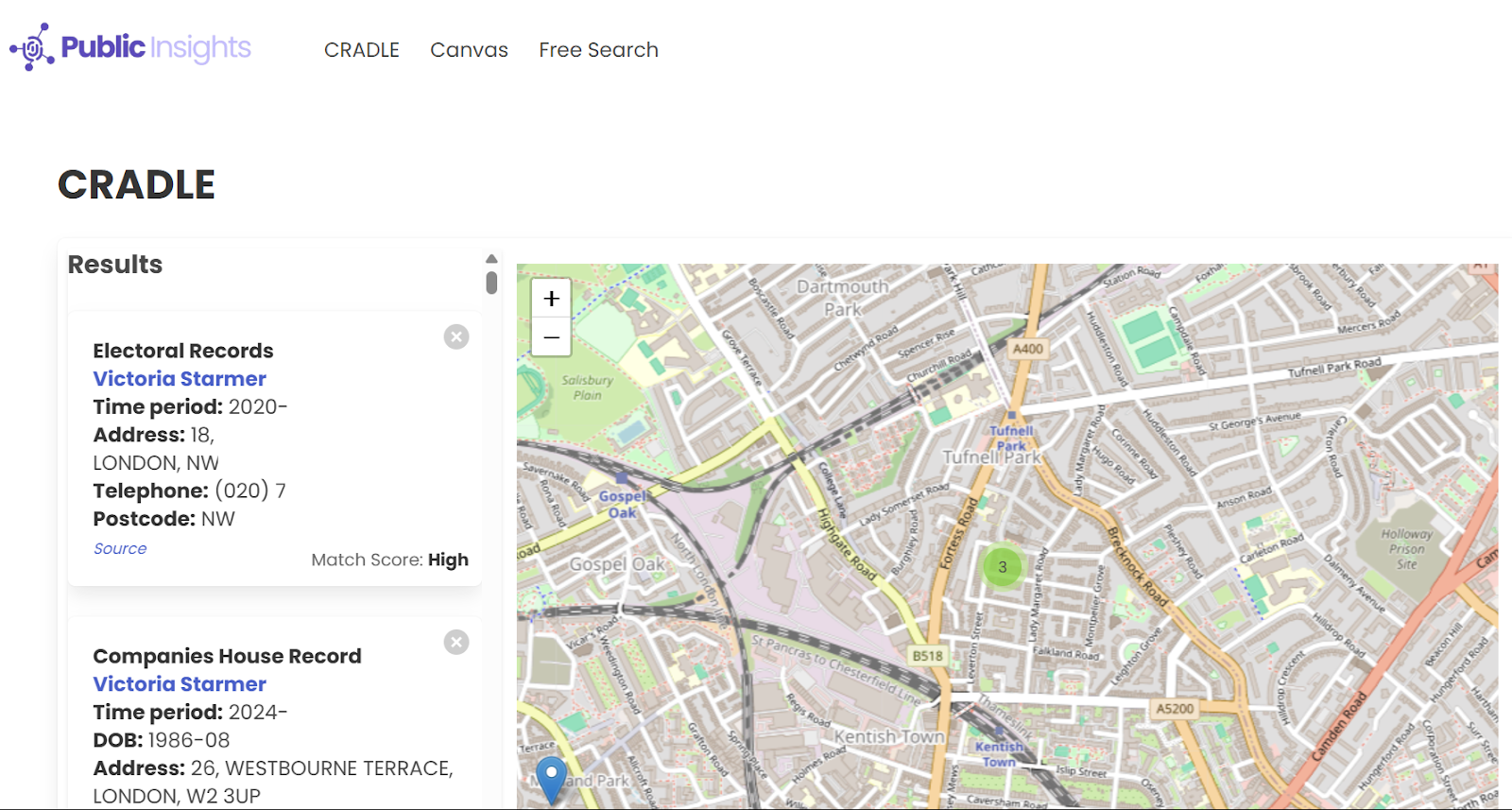The UK electoral roll remains one of the most valuable starting points for open-source intelligence focused on UK citizens.
A search of voter data can confirm a subject’s current or historic address, reveal co-residents, and in some cases, investigators can return a landline number through cross-referenced directories.
This guide explores how investigators can effectively use electoral roll data and what to watch out for.
What Does the Electoral Roll Include?
There are two versions of the UK electoral roll:
- Full Register: Covers all ~44 million registered voters. Accessible to councils, law enforcement, credit reference agencies, and political parties. It’s not publicly searchable online and can only be viewed in person.
- Open Register: An opt-in subset (~16 million voters). Available for commercial or public inspection and is searchable online.
Both of these registers typically include:
- Full names
- Current or historic addresses
- Co-residents (others registered at the same property)
Some platforms cross-reference this data with historic landline directories (e.g. BT listings), offering added context. These numbers are often outdated due to a lack of maintenance, but can be helpful.
Case Study: How the Electoral Roll Compromises the PM’s Household
Electoral roll data can unintentionally expose high-risk individuals, even when they’ve taken steps to protect themselves.
Example: Victoria Starmer, wife of UK Prime Minister Keir Starmer.

Keir Starmer does not appear on the open register. But the redacted screenshot above shows that Victoria does. A search returns:
- Their residential address
- An associated landline number, matched from an old public phone directory
This creates a textbook vulnerability:
- A high-risk individual opts out
- A household member remains listed
- Their home becomes identifiable
The same risk affects:
- Corporate executives
- Judges, police officers, and prosecutors
- Journalists and researchers
- Victims of harassment or stalking
Recommendation: Household-wide electoral register audits should be standard practice in executive protection and high-risk security planning.
Investigative Use Cases for the Electoral Roll
Electoral roll data supports a wide range of OSINT workflows:
1. Locate a Subject
- Confirm a current or past address
- Identify where someone lived at the time of an event
2. Map Associates and Family
- Co-residents can reveal partners, family members, or unrelated associates
- Useful for building networks or social context
3. Verify Identity or Aliases
- Spot middle names, unusual spellings, or shared surnames
- Cross-check with other data sources
4. Validate Asset Ownership
- Tie subjects to properties referenced in planning applications or landlord licensing
- Identify possible undeclared addresses
5. Investigate the 'Unsearchable'
- Some individuals with a limited online footprint still appear on the electoral roll
Limitations to Be Aware Of
|
Limitation
|
Impact
|
|
Opt-in only
|
Only ~35% of UK voters appear on the open register
|
|
No DOBs or unique IDs
|
Common names are difficult to resolve without additional context
|
|
Outdated in fast-moving cases
|
Updates are periodic; recent moves may not appear yet
|
Always cross-reference findings with other public records (e.g. planning data, Companies House, landlord registers) for greater confidence.
Where to Search the UK Electoral Roll
Several platforms combine open register data with other UK datasets:
- 192.com – Open register + landline directory matches (historic)
- UK Phonebook – Similar functionality, also offers public sector access to Full Register to the public sector via Orbis
- Genes Reunited – Strong for historical electoral roll data
- Public Insights – Search by name across electoral roll, HMO licenses, business records, and more—ideal for entity resolution in UK investigations
Executive Protection Checklist
If you're responsible for safeguarding high-profile individuals:
✅ Audit the open register for your subject and household members
✅ Submit opt-out requests to local authorities if entries are found
✅ Cross-reference with historic phonebooks to catch outdated but still searchable listings
✅ Review planning applications, HMO registers, and company records that may reuse personal addresses
The weakest link is often not the principal; it’s a family member or associate still publicly listed.
Using the Electoral Roll in Context
The UK electoral roll is a foundational record for OSINT investigators, offering address-level visibility. But it also illustrates the tension between transparency and personal privacy.
Whether you’re investigating fraud, tracing assets, or protecting a public figure, knowing how to use electoral roll data, and how to mitigate its exposure, is critical to safe and effective investigations.
While the electoral roll provides key address intelligence, it’s most effective when combined with other records. Investigators rarely rely on a single source, especially when dealing with common names or limited online presence.
Platforms like Public Insights' Cradle help resolve identities by linking open register data with landlord records, planning permission, business registrations, and insolvency filings, giving you a multi-source view of a subject’s footprint.
Explore how Public Insights can support your OSINT investigations with a trial at cradle.publicinsights.uk.